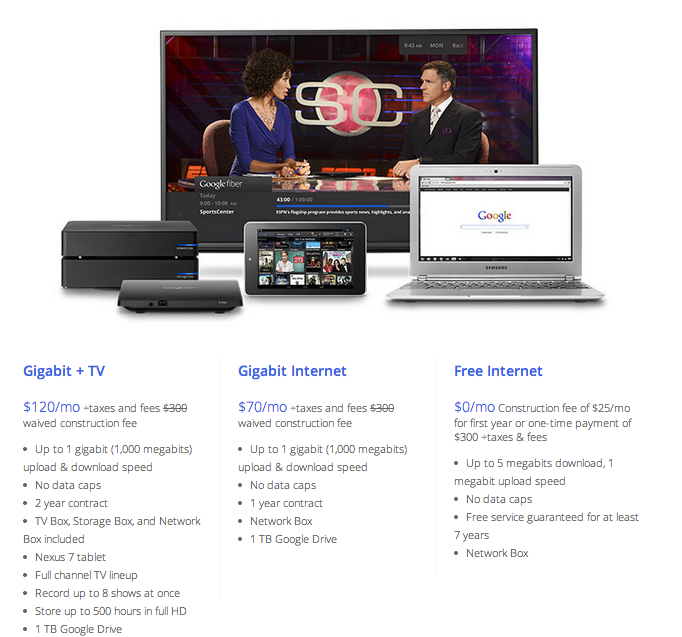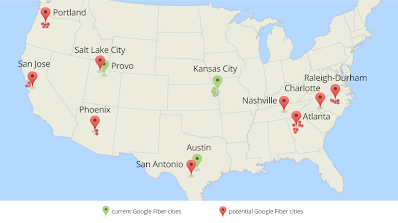In order to make sure you and your neighbors get Fiber, there are only two things you need to do. First, go to our website and sign up. You’ll pay a $10 registration fee, and you can choose one of our three Fiber plans:
Then, it’s time to encourage your neighbors to sign up for Fiber, too! We’ve clustered homes across the KC area into small groupings called ”fiberhoods” (you can see which fiberhood you’re in on our website). Your fiberhood has a goal — a certain number of homes that need to sign up for Google Fiber. You’ll be able to see a real-time count on our website that shows you what your goal is, and how many more people in your fiberhood need to sign-up. If you and your neighbors meet this goal, we’ll aim to bring you Google Fiber by the end of this year. If you don’t meet this goal, we can’t commit to bringing Fiber to your area — which is why if you want super-fast Internet, you should help rally your neighbors to sign-up.
There are lots of ways to spread the word. You can tell your neighbors about Fiber yourself, bring them to one of our events where we can answer any of their questions, or bring them by the Fiber Space in Westport (and now temporarily in Ward Parkway Mall, Santa Fe Center and Red Bridge Shopping Center) to see what Google Fiber is like.
One important note: your fiberhood has a deadline by which you need to reach your signup goal. The deadlines are coming up over the next few weeks, so it’s important to sign up as soon as you can.
• Thursday, April 10 — deadline for residents in 73 fiberhoods in south KCMO, Grandview & Raytown
• Thursday, May 15 — deadline for residents in 33 fiberhoods in KCMO northwest
• Monday, June 19 — deadline for residents in 52 fiberhoods in KCMO northeast and Gladstone
We plan to start hooking up homes in these fiberhoods a few weeks after their deadlines, and expect to have all qualified fiberhoods connected by the end of this year. We are also extending this opportunity to the 21 fiberhoods in central KCMO and KCK that didn’t qualify for Google Fiber in 2012; these fiberhoods will have until June 19 to tell us they want Fiber.
You can help us get to your fiberhood soon, by signing up this afternoon and telling your neighbors to sign-up, too.


